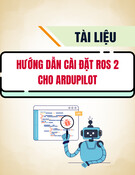
TNU Journal of Science and Technology
229(12): 146 - 153
http://jst.tnu.edu.vn 146 Email: jst@tnu.edu.vn
FACTORS THAT CAN AFFECT DIFFERENCES
IN STUDENTS' COMPUTATIONAL THINKING
Nguyen Nguyen Huong1*, Ho Cam Ha2, Nguyen Chi Trung2
1HNMU - Hanoi Metropolitan University
2HNUE - Hanoi National University of Education
ARTICLE INFO
ABSTRACT
Received:
14/5/2024
In the era of technological development, researchers and educators,
who live in advanced countries, have researched computational
thinking, so that new generations can gain it as an essential skill.
Realizing the importance of computational thinking, Vietnamese
Educational Policy Makers also set it as one of the goals of our new
education program. Applying computational thinking to Vietnamese
education is still fresh and lacks local research; therefore, this study will
explore our students’ computational thinking abilities as well as analyze
and predict the factors that can affect differences in students’ abilities.
We carried out surveys which had been built on Computational
Thinking test (CTt) and Competent Computational Thinking test (cCTt)
in 4 months and focused on two groups (7-9 years old and 10-15 years
old) in 3 different provinces. When our new educational program is
applied gradually, this study, which showed some controllable causes
for students’ computational thinking, would be a useful reference for
further studies to find suitable pedagogy methods and classroom
instructions. Finally, the paper brought out the differences in students’
computational thinking and illuminated their reasons.
Revised:
08/8/2024
Published:
08/8/2024
KEYWORDS
Computational thinking (CT)
Computational Thinking test (CTt)
Competent Computational
Thinking test (cCTt)
Controllable factor
General Education Program 2018
NHỮNG YẾU TỐ CÓ THỂ ẢNH HƯỞNG ĐẾN SỰ KHÁC NHAU
TRONG TƯ DUY MÁY TÍNH CỦA HỌC SINH
Nguyễn Nguyên Hương1*, Hồ Cẩm Hà2, Nguyễn Chí Trung2
1Trường Đại học Thủ đô Hà Nội
2Trường Đại học Sư phạm Hà Nội
THÔNG TIN BÀI BÁO
TÓM TẮT
Ngày nhận bài:
14/5/2024
Thời đại công nghệ phát triển, các nhà giáo dục tại các nước tiên tiến
tiến hành nghiên cứu tư duy máy tính giúp các thế hệ tiếp theo đạt
được nó như một kỹ năng thiết yếu. Nhận thức tầm quan trọng của tư
duy máy tính, Bộ Giáo dục và Đào tạo Việt Nam coi đó là một trong
những mục tiêu của chương trình giáo dục mới. Khi các nghiên cứu
ứng dụng về loại hình tư duy này tại Việt Nam còn hạn chế, bài báo
này sẽ giúp khám phá mức độ tư duy máy tính của học sinh, phân tích
và dự đoán những nhân tố ảnh hưởng đến sự khác biệt trong khả năng
tư duy của các em. Chúng tôi đã thực hiện các khảo sát xây dựng dựa
trên hai bài kiểm tra Tư duy máy tính và Năng lực Tư duy máy tính
trong 4 tháng, ở hai nhóm học sinh (7-9 tuổi và 10-15 tuổi) tại 3 tỉnh
thành khác nhau. Phân tích, chỉ ra một số nguyên nhân gây khác biệt
có thể kiểm soát được sẽ là tài liệu tham khảo hữu ích nhằm xác định
phương pháp dạy học phát triển tư duy máy tính.
Ngày hoàn thiện:
08/8/2024
Ngày đăng:
08/8/2024
TỪ KHÓA
Tư duy máy tính
Bài kiểm tra tư duy máy tính
(CTt)
Bài kiểm tra Năng lực tư duy
máy tính (cCTt)
Nguyên nhân có thể kiểm soát
Chương trình giáo dục phổ
thông 2018
DOI: https://doi.org/10.34238/tnu-jst.10388
* Corresponding author. Email: nghuongk45a1@gmail.com

TNU Journal of Science and Technology
229(12): 146 - 153
http://jst.tnu.edu.vn 147 Email: jst@tnu.edu.vn
1. Introduction
Knowing about the reasons for differences in students’ CT could bring some advantages.
Firstly, CT has been researched and applied in advanced countries since the Wing’s motivated
paper, Computational Thinking (2006). The reasons are creating a new generation which can deal
with unpredictable problems in the modern technology world [1], [2]. It would have the same
benefits with undeveloped countries, such as Vietnam. The Vietnamese government also wants to
form and enhance our students’ CT to adapt to the international educational situation. Indeed, in
the General Education Program 2018, our Ministry of Education and Training set CT as one of
our Informatics program’s goals [3]. But there is a shortage of local research on CT in Vietnam to
facilitate it. Finally, during the gradual implementation of the new educational program, Vietnam
education has clear differences between regions and school levels. It is clear that Vietnam has a
long shape from mountainous to coastal regions, from economic centers to small and poor towns.
In addition, the methods to chase a higher educational level are not the same at different school
levels, the entrance to get into high schools sometimes is more difficult than getting into
universities. That leads to the priorities in study at different school levels are not similar. In
conclusion, having a full knowledge of the different Vietnamese students’ CT could help us get
more bases to improve student’s skill in Vietnam and have more references for other research.
Since 2006, J.Wing’s article has raised a research movement of CT in a mass of fields. In the
first line of her paper, she said that “It represents a universally applicable attitude and skill set
everyone, not just computer scientists,…” [1], so CT has applied and researched in different
fields from business to industry.
To respond to Wing’s call that CT should be added to “every child’s analytical ability” [1], the
field of CT education has a priority attention all over the world with many proposed definitions,
frameworks, and assessment methods. Firstly, in 2006, Wing did not give a definition clearly. She
referred to CT is a skill which helps you to use abstraction, decomposition, and parallel processing
when deal with a large complex problem; and in some later researches, some aspects such as
algorithm were added and explained, but they are not easy in assess CT abilities [4]. With the aim
to provide a framework and vocabularies of CT for K-12 educators, the International Society for
Technology (ISTE) and the Computer Science Teacher Associations (CSTA) additionally
developed a definition that CT is a problem-solving process with six characteristics and five
essential skills in 2011 [5]. In 2012, Brennan and Resnick also had suggested a CT framework
with three key dimensions: seven concepts, four pairs of practices, and three perspectives [6].
Though this framework was developed from Scratch programming, it has a lot of meaning for
educators such as developing a creative computing curriculum [7], or a method to assess CT [8].
Furthermore, while CT in education has grown rapidly, in 2019, S. Kong et al gave a conceptual
framework of it includes six sub-themes: CT and Tool Development, Educational Policy &
Implementation, CT and Programming Education in K-12, STEM & Non-formal Learning,
Teacher & Mentor Development, and Competency & Assessment [2].
From S.Kong et al’ framework with six sub-themes [2], we can see that building tools and
framework to assess student’s CT which can be divided into two groups: plugged and unplugged
are important parts of these studies. Firstly, for plugged development tools, educators used
programming software such as Scratch, App Inventor or a robot coding to enhance student’s CT
[2], [6], [9], [10]; for unplugged development tools, they used other activities without computer
to foster these student’s abilities [9], [11]. Secondly, for plugged assess tools, researchers can
used applications, which can assess students’ abilities through their artifacts, such as Dr. Scratch,
App Inventor; for unplugged assess tools, they can used some paper test, which can judge the
abilities through their solve problem skills, such as Bebras Task (formed as an international
challenge), Computational Thinking Test (CTt) [12].
To understand Vietnamese students’ CT, we should divide it into many small tasks, such as:
know about students’ living context, assessing their CT, and explore which are the causes that

TNU Journal of Science and Technology
229(12): 146 - 153
http://jst.tnu.edu.vn 148 Email: jst@tnu.edu.vn
could impact on the differences of these abilities. Because the new curriculum which makes
Informatics compulsory has not been enacted at all class levels, the Informatic students’ skills
are not equal. That means, some students are familiar with Informatics, but some others are
unfamiliar with even computers. So, we need to choose a suitable tool which does not require
certain Informatics skills to assess our students’ CT. Considering some paper tests, we see that
the Computational Thinking Test (CTt) and Competence Computational Thinking Test (cCTt),
which is unfamiliar to Vietnamese students, may be more suitable because of some reasons. In
2017, Román-González et al proposed a Computational Thinking Test (CTt) which did not
require validation and reliability for the students from 5th to 10th grade [8], [12], [13]. Inspired
by CTt, María Zapata et al built Beginners Computational Thinking Test (BCTt), a
computational thinking test for 5-7 years old in 2021 [14]; and, Laila El-Hamamsy et al
developed the Competence Computational Thinking Test (cCTt) for upper primary school (7-9
years old) in 2022 [15]. So with the CTt and cCTt, we have tools for assessing the students’ CT
from 3rd to 9th grade, which equal Vietnamese basic education phase in our General Education
Program 2018 [3]. Additionally, by reading Kong’s collection and other researches, we also
know that there are some factors that can affect students’ CT. They are STEM performance
[16], personal character [10], and playing games [17].
We would explore the factors to know how it affects Vietnamese students’ CT.
In summary, the purpose of this research reported here was determine:
• Q1. Whether living place have effects on the student’s CT or not
• Q2. Which factors, that we can change in teaching, affect student’ CT
• Q3. Whether different age group is cause of the difference of students’ CT
2. Materials and Methods
This research followed quantitative (both online survey and printed survey). By this way, we
can collect the answer from both primary schools’ students who prefer to use paper and pencil to
do their homework and secondary school students who live in other provinces.
2.1. Dividing the participants into two age groups
We surveyed two different main groups: a younger group with 7-9 years old (primary school
students from 2nd -4th grade) and an elder group with 10-15 years old (the 5th grade and
secondary school students) from eight different schools. The surveys were sent to the participants
by their teachers (both online and printed), then the students were encouraged to do it (almost in
online type). From March to August of the year 2022, (there was a break time in summer
holidays), we administered the surveys to 518 Vietnamese students (283 younger students and
235 elder students). Table 1 shows the distributions of the subjects by groups and schools. In
addition, based on the location/area of schools, we divided each group into 3 sub-groups: Hanoi,
Danang, and Quangtri.
Table 1. The distributions of the participants by groups and schools
SN
School’s name
Area
Younger students
Elder students
Sum
1
DichVong A Primary School
Hanoi
168
112
280
2
Ta Thanh Oai Primary School
Hanoi
1
1
3
DocTin Secondary School
Hanoi
46
46
4
My Duc Secondary School
Hanoi
1
1
5
Chu Van An Secondary School
Hanoi
1
1
6
Dich Vong Secondary School
Hanoi
1
1
7
Thai Thi Boi Primary School
Danang
74
25
99
8
Bui Duc Tai inter-level School
Quangtri
40
49
89
SUM
283
235
518

TNU Journal of Science and Technology
229(12): 146 - 153
http://jst.tnu.edu.vn 149 Email: jst@tnu.edu.vn
2.2. Building the surveys
Both of two surveys have two parts with answering time be 50 minutes:
• The first part is demographic involves 19 questions that collected the personal
information from mainly designed with multiple checkbox questions, which are the possible
causes of students’ abilities. In the process of building the part, we had contributions from a
primary teacher leader, and two educational experts. Item first to sixth aimed to define the
participant’s group and basic information such as school’s name or gender. The seventh and
eighth got the student’s time using the computer. The ninth asked about main activities when
students are using computers. The tenth item was used to know if there is someone working in
the IT field in the student’s family. The eleventh to thirteenth found the students’ attitude with
Informatics. We used the fourteenth to know what students characterize as being introvert or
extrovert. The fifteenth explored the way participants used to solve problems. From sixteenth to
eighteenth items, students revealed their abilities through mathematics, languages, and contest
results. The final item was a list of students’ self-assessments in some aspects.
• We reused two valid and reliable tests: the Computational Thinking test (CTt) for elder
group with 28 items, and the Competent Computational Thinking test (cCTt) for younger group
with 25 items in the second part to measure students’ abilities [13], [15]. These tests do not
require the participants to be familiar with computers or computer science before.
2.3. Conducting the surveys
We conducted the surveys to get an initial assessment of Vietnamese students’ CT skills in
some regions and personal information may influence these abilities. In order to conduct the
surveys in different schools, we delivered paper format at a primary school in Danang and
another in Hanoi. We sent the teachers who guided their students to answer our surveys and the
guides for both groups (elder group for students who in fifth class and younger group for the
rest). To get answers from other participants, we combined two surveys in a Google Form, which
lead the students to different tests after their answer about their classes. We sent the link of this
form to teachers at the other schools and asked them to encourage their students to answer.
3. Results and Discussion
In this section, we divide the data in two groups: younger and elder students. With each group,
we have three sub-groups, which are based on the location of students (Hanoi, Danang, and
Quangtri) and compare student’s results in each pair of sub-groups. If the differences of results
are statistically significant, we will use the independent sample test with each possible reason
(from the first part in the surveys) to define it is not the cause of different results. To analyze the
data, we have the code for its variables which correspond with the possible causes and use SPSS
in analysis. For each group, firstly we use an Independent Sample Test with each pair: Hanoi’s
students - Danang’s students, Hanoi’s students – Quangtri’s students, and Danang’s students-
Quangtri’s students correspondingly. In pairs which have the means of result scores are different,
we will compare each pair of variables to find which variable could be the cause of differences
by Pearson correlation coefficient.
3.1. Younger participants
Using independent tests of each pair: Hanoi’s students - Danang’s students, Hanoi’s students
– Quangtri’s students, and Danang’s students- Quangtri’s students, we have the main results.
While the means of cCTt scores between Danang and Quangtri groups are not different, the
scores between two pairs: Hanoi – Danang and Hanoi-Quangtri have differences with statistical
meanings. These mean that with each pair, we need to compare each variable to find which
variable could be the cause of differences.

TNU Journal of Science and Technology
229(12): 146 - 153
http://jst.tnu.edu.vn 150 Email: jst@tnu.edu.vn
For the pair of Hanoi – Danang groups, we find the variables which have meaning differences
are: Class (Sig_F =0.000; Sig_t=0.000); TiOfUs (Sig_F=0.000; Sig_t=0.001); PuOfUs3
(Sig_F=0.000; Sig_t=0.000); PuOfUs7 (Sig_F=0.000; Sig_t=0.003); PuOfUs11 (Sig_F=0.000;
Sig_t=0.010); ExtAct4 (Sig_F=0.000; Sig_t=0.000); ExtAct11 (Sig_F=0.000; Sig_t=0.002);
FinSov1 (Sig_F=0.000; Sig_t=0.000); FinSov3 (Sig_F=0.000; Sig_t=0.000); FinSov4
(Sig_F=0.000; Sig_t=0.000); ResLit (Sig_F=0.697; Sig_t=0.017); ChoCla (Sig_F=0.000;
Sig_t=0.000); SelPer (Sig_F=0.451; Sig_t=0.010); SelGoSc (Sig_F=0.002; Sig_t=0.000); SelLea
(Sig_F=0.136; Sig_t=0.001).
For the pair of Hanoi – Quangtri groups, we find the variables which have meaning differences
are: Class (Sig_F=0.001; Sig_t=0.032); PuOfUs1 (Sig_F=0.000; Sig_t=0.027); PuOfUs8
(Sig_F=0.001; Sig_t=0.021); PuOfUs9 (Sig_F=0.000; Sig_t=0.031); PuOfUs10 (Sig_F=0.000;
Sig_t=0.008); FamTec (Sig_F=0.000; Sig_t=0.002); ExtAct11 (Sig_F=0.002; Sig_t=0.002); FinSov1
(Sig_F=0.000; Sig_t=0.026); FinSov6 (Sig_F=0.000; Sig_t=0.001); ChoCla (Sig_F=0.000;
Sig_t=0.004); SelSmTe (Sig_F=0.727; Sig_t=0.013); SelCre (Sig_F=0.665; Sig_t=0.004).
So, with the set data of younger students, we find that the differences of CT abilities may come
from the variable (which italic variables that we can control in our class): Class; TiOfUs; PuOfUs1;
PuOfUs3; PuOfUs7; PuOfUs8; PuOfUs9; PuOfUs10; PuOfUs11; FamTec; ExtAct4; FinSov1;
FinSov3; FinSov4; FinSov6; ChoCla; ResLit; SelPer; SelSmTe; SelGoSc; SelCre; SelLea.
In more details analyzing, we use Bivariate Correlations between these variables with the
cCT_KQ to recheck (which italic variables that we can control in our class): Class (Sig=0.000;
r=0.312); FamTec (Sig=0.016; r = 0.146); ExtAct4 (Sig=0.006; r = 0.164); ExtAct10 (Sig=0.009;
r= 0.155); FinSov1 (Sig=0.020; r = -0.139); FinSov3 (Sig=0.000; r = -0.238); FinSov5
(Sig=0.000; r = 0.221); ChoCla (Sig=0.003; r=0.182); SelRan (Sig=0.004; r = -0.179); SelGoSc
(Sig=0.043; r=0.126); SelCre (Sig=0.016; r=0.155); SelLea (Sig=0.001; r=0.210);
3.2. Elder participants
Similarly, using independent tests of each pair: Hanoi’s students - Danang’s students, Hanoi’s
students – Quangtri’s students, and Danang’s students- Quangtri’s students, we have the main
results. While the means of cCTt scores between Hanoi - Danang groups are not different, the
scores between two pairs: Hanoi – Quangtri and Danang-Quangtri have differences with
statistical meanings. These mean that with each pair, we need to compare each variable to find
which variable could be the cause of differences.
For the pair of Danang-Quangtri groups, we find the variables which have meaning differences
are: Class (Sig_F = 0.000; Sig_t = 0.000); TiOfUs (Sig_F = 0.336; Sig_t = 0.050); PuOfUs6 (Sig_F
= 0.000; Sig_t = 0.020); PuOfUs9 (Sig_F = 0.000; Sig_t = 0.012); PuOfUs11 (Sig_F = 0.000; Sig_t
= 0.001); Feel (Sig_F = 0.218; Sig_t = 0.009); ExtAct6 (Sig_F = 0.000; Sig_t = 0.006); ExtAct7
(Sig_F = 0.000; Sig_t = 0.007); FinSov2 (Sig_F = 0.000; Sig_t = 0.001); FinSov4 (Sig_F = 0.000;
Sig_t = 0.008); SelCoo (Sig_F = 0.366; Sig_t = 0.007); SelCha (Sig_F = 0.028; Sig_t = 0.015);
SelSmTe (Sig_F = 0.059; Sig_t = 0.001); SelLaTe (Sig_F = 0.001; Sig_t = 0.000).
For the pair of Hanoi-Quangtri groups, we find the variables which have meaning differences
are: PuOfUs6 (Sig_F = 0.000; Sig_t = 0.038); PuOfUs9 (Sig_F = 0.001; Sig_t = 0.048);
PuOfUs10 (Sig_F = 0.000; Sig_t = 0.001); ExtAct3 (Sig_F = 0.000; Sig_t = 0.033);FinSov5
(Sig_F = 0.283; Sig_t = 0.017); FinSov6 (Sig_F = 0.020; Sig_t = 0.000); ResMat (Sig_F =
0.006; Sig_t = 0.050); SelPer (Sig_F = 0.000; Sig_t = 0.002); SelRan (Sig_F = 0.972; Sig_t =
0.022); SelSmTe (Sig_F = 0.923; Sig_t = 0.001); SelGoLa (Sig_F = 0.013; Sig_t = 0.005);
SelLea (Sig_F = 0.369; Sig_t = 0.000).
So with the set data of elder students, we find that the differences of CT abilities may come from
the variable (which italic variables that we can control in our class): Class; TiOfUs; PuOfUs6;
PuOfUs9; PuOfUs10; PuOfUs11; Feel; ExtAct3; ExtAct6; ExtAct7; FinSov2; FinSov4; FinSov5;
FinSov6; ResMat; SelPer; SelCoo; SelCha; SelRan; SelSmTe; SelLaTe; SelGoLa; SelLea.

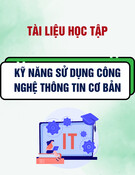

![Tài liệu giảng dạy Lịch sử khoa học máy tính [mới nhất]](https://cdn.tailieu.vn/images/document/thumbnail/2025/20250516/phongtrongkim0906/135x160/334_tai-lieu-giang-day-lich-su-khoa-hoc-may-tinh.jpg)


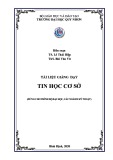
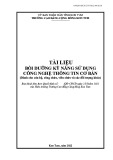
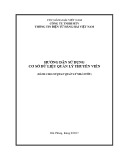
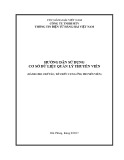
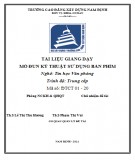

![Đề thi Excel: Tổng hợp [Năm] mới nhất, có đáp án, chuẩn nhất](https://cdn.tailieu.vn/images/document/thumbnail/2025/20251103/21139086@st.hcmuaf.edu.vn/135x160/61461762222060.jpg)
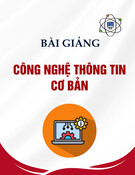

![Bài tập Tin học đại cương [kèm lời giải/ đáp án/ mới nhất]](https://cdn.tailieu.vn/images/document/thumbnail/2025/20251018/pobbniichan@gmail.com/135x160/16651760753844.jpg)
![Bài giảng Nhập môn Tin học và kỹ năng số [Mới nhất]](https://cdn.tailieu.vn/images/document/thumbnail/2025/20251003/thuhangvictory/135x160/33061759734261.jpg)
![Tài liệu ôn tập Lý thuyết và Thực hành môn Tin học [mới nhất/chuẩn nhất]](https://cdn.tailieu.vn/images/document/thumbnail/2025/20251001/kimphuong1001/135x160/49521759302088.jpg)

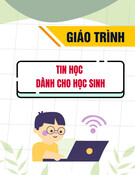
![Trắc nghiệm Tin học cơ sở: Tổng hợp bài tập và đáp án [mới nhất]](https://cdn.tailieu.vn/images/document/thumbnail/2025/20250919/kimphuong1001/135x160/59911758271235.jpg)
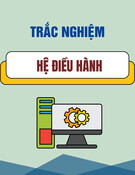
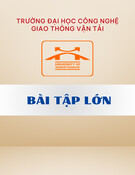
![Giáo trình Lý thuyết PowerPoint: Trung tâm Tin học MS [Chuẩn Nhất]](https://cdn.tailieu.vn/images/document/thumbnail/2025/20250911/hohoainhan_85/135x160/42601757648546.jpg)

